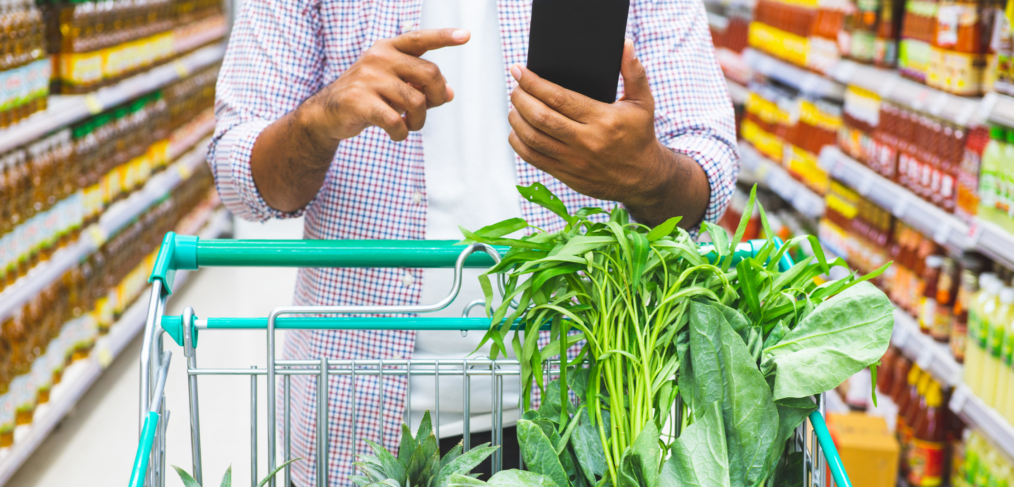
The Canadian Grocery Shopper – Have They Reached Their Breaking Point?
I feel this quote from the CEO of Dollarama speaks candidly of the Canadian grocery shopper:
“At some moments, it seems resilient, at others it seems fragile, so it’s really hard at this point to draw any trends on the health of the Canadian consumer.” Neil Rossy, CEO, Dollarama, September 2025
Global food prices have significantly increased since the end of the pandemic. Canadian food prices have soared 24.6% between 2020 and 2024.[1] For comparison, UK food prices rose 37.2% between the 5-year period of August 2020 – August 2025.[2] Most recently, Canada’s CPG inflationary rate was 3.5% in August and 3.8% in September. This contrasts with Japan’s CPG inflationary rate of 7.2% and the UK at 5.1% in September.[3] These trends highlight a growing concern, with a recent Food Banks Canada report indicating that 25% of the country is facing food insecurity, an increase from 18% in 2023. [4] Additionally, Nielsen IQ reports that 35% of Canadians remain vulnerable spenders due to income loss or financial insecurity.[5]
Where does the Canadian grocery shopper go from here? Have they reached the breaking point?
There is evidence to suggest this is the case:
- Rising prices are the top concern for 96% of Canadians.[6]
- 42% of Canadians are shopping the basics.[7]
- For the 10-week period ending June 2025, consumers’ average food basket size declined 2.8%.[8].
What lies ahead for consumers in 2026?
Nielsen IQ’s latest outlook warns, “Consumers are Hitting their Spending Limits and Desperate for Relief – Opening the Doors for Promotions, Private Label, and Health Claims to Drive Sales”[9]
As part of their Consumer Outlook Guide to 2026, Nielsen IQ identified three key purchase triggers for 2026:
- Price: “Jenny Bell, Managing Director of Nielsen IQ, “Consumers are done with price increases,” suggesting that brands may need to increase their promotional activities. For the 52-week period ending June 2025, 50.7% of all CPG purchases in Canada were sold on promotion.[10] Alternatively, Canadians may opt for private label formats, with 68% agreeing that they offer a strong alternative to national brands.[11]
- Convenience: This also influences where consumers shop. Most Canadians favour an omnichannel approach, frequently utilizing multiple channels for their grocery needs, a trend especially pronounced in discount, dollar, and club stores. Given that FMCG sales constituted only 3.5% of total online sales for the 52-week period ending June 2025,[12] a diversified channel strategy is essential to effectively reach consumers and adapt to their shopping habits.
- Health Benefits: “One place where consumers are willing to spend more is on products they perceive as healthier.” Jenny Bell, Managing Director, Nielsen IQ. Products that feature “Free From” claims to those containing high levels of protein / fibre are in high demand. Organic and clean-label options are gaining traction, with consumers willing to pay a premium for products that promise transparency, fewer additives, and sustainable farming practices.
Spending caution is now baked into household economics ie, Canadian households with incomes greater than $100,000 are spending 10% more in discount banners than a year ago.[13] Consumers seek brands for emotional reassurance as much as they do for affordability.
Nielsen IQ’s Consumer Outlook Guide to 2026 further supports this trend, revealing that 48% of global consumers intend to maintain their current grocery spending levels over the next 12 months. [14]
How should brands respond in 2026?
- Price: Affordability stands out as the top brand driver for 92% of Canadians.[15] Furthermore, only 12% of consumers are committed to their regular brand irrespective of price.[16] Given these findings, it appears that increasing prices should be considered only as a final measure.
- Value: The lowest price does not always equate to the best value. The value trigger drives more than one-third of consumption choices during meals.[17]There are two key value elements with every purchase: 1. Functional, and 2. Emotional. Each product provides both benefits. Brands must decipher what these value triggers are for their customer base.
- Health and Wellness: The shift to preventive health is driving more proactive approaches to well-being. Moving forward, both mental and physical well-being remain significant concerns for consumers. Specifically, 49% of consumers globally are concerned about mental health, primarily stress and anxiety, while 47% are concerned about physical health, including sleep and weight.[18]
- Trust and Transparency: Consumers are exhibiting a deliberate approach to spending, favouring brands that consistently offer trust and value. In this evolving market, brand trust has emerged as a crucial factor, with 95% of consumers indicating it as a critical element in their brand selection process.[19] This emphasis on trust begins with increased transparency, which has transitioned from a desirable attribute to a significant purchasing incentive. Notably, 94% of consumers express loyalty to brands that demonstrate complete transparency.[20]
Food Distribution Guy’s Final Thoughts
For the first 6-months of the year, unit tonnage in the Canadian grocery sector has been at a break-even point: (-1.3% decline in Qtr 1).[21] and a (+1.2% increase in qtr 2). The biggest bright spot is the Natural Health store sector in which for the 13-week period ending June 2025, they achieved a +4.1% dollar sales increase vs a year ago, and a +4.4% increase in unit tonnage.[22]
In 2026, Circana is projecting weak food and beverage volume growth of -1% to 1% for the US grocery sector.[23]
References:
[1] Nielsen IQ, Carman Allison, 2025
[2] Economic Up-Date: Why Has Inflation Gone up in 2025, www.commonslibrary.parliament.uk, September 2025
[3] Canada’s Painful Return to Food Inflation, www.canadiangrocer.com, October 2025
[4] Carney Not Meeting His Own Measure as Food Inflation Climbs Again, www.torontosun.com, September 2025
[5] Nielsen IQ, Carman Allison, Grocery Business, November / December 2024
[6] What’s Worrying Canadians, Sizing up Climate Change, Canadian Grocer, September / October 2026
[7] Finding Harmony on the Shelf, Carman Allison, Nielsen IQ, Grocery Business, July / August 2025
[8] FMCG Quarterly Report, QTR 2, Nielsen IQ, September 2025
[9] Shoppers Hitting a Breaking Point: How Will Price and Value Play Out in 2026, www.foodnavigator-usa.com, October 2025
[10] FMCG Canadian Quarterly Report, Qtr 2, Nielsen IQ, September 2025
[11] Finding Harmony on the Shelf, Carman Allison, Nielsen IQ, Grocery Business, July / August 2025
[12] Click to Carts, The New Rules of Engagement, Nielsen IQ, September 2025
[13] Discount Momentum, Carman Allisom, Nielsen IQ, Grocery Business, January / February 2025
[14] Consumer Outlook Guide to 2026, Nielsen IQ, September 2025
[15] Finding Harmony on the Shelf, Carman Allison, Nielsen IQ, Grocery Business, July / August 2025
[16] Consumer Outlook Guide to 2026, Nielsen IQ, September 2025
[17] Cozying up to Value, Canadian Grocer, September / October 2025
[18] Top Nutrition Trends, How Brands Respond to Transitioning Nutrition Trends, Nova Market Insights, 2025
[19] NIQ 2026 Consumer Outlook: Bold Brands Win with Cautious Consumers, www.businesswire.com, September 2025
[20] What’s Driving Consumer Demand for Transparency in Health Products, www.inriver.com, July 2025
[21] 2025 Q1 Inflation: Progress Up-Date, Mike Ljubicic, Nielsen IQ, Grocery Business, May / June 2025
[22] FMCG Canadian Quarterly Report, Qtr 2, Nielsen IQ, September 2025
[23] Circana Predicts Low Volume Growth for Food Industry in 2026, www.supermarketperimiter.com, August 2025





